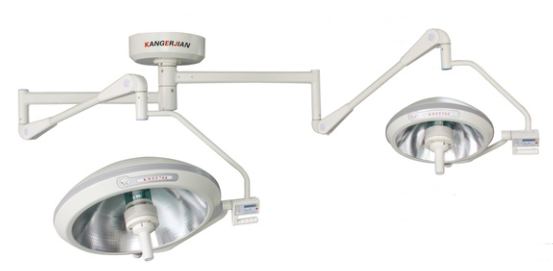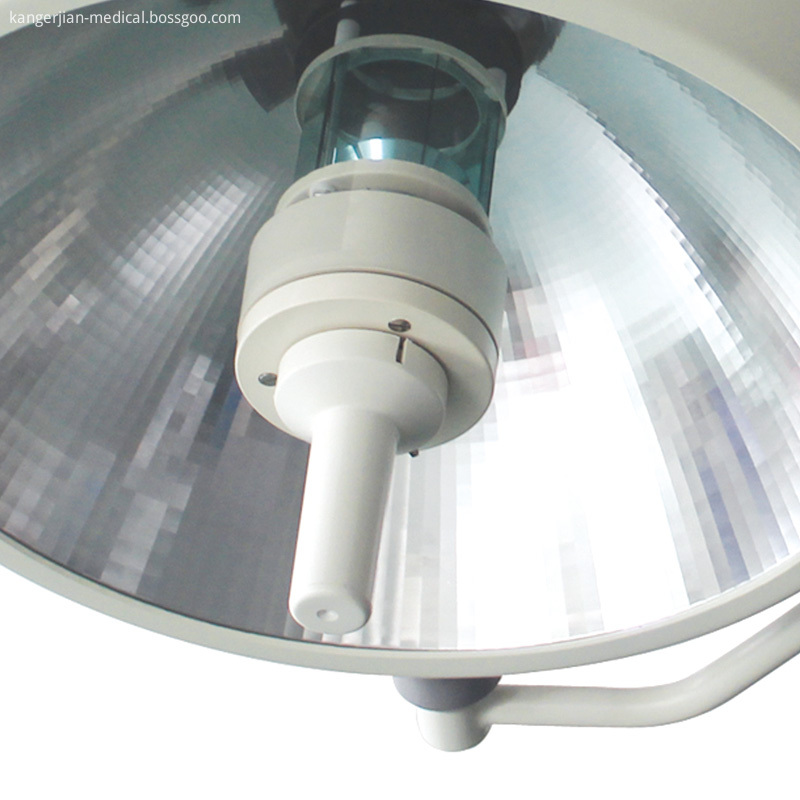The traditional gourd cultivation is carried out in the form of scaffolds for open density cultivation. Generally, they are planted in the courtyard or on wasteland. Only 50 to 60 plants are cultivated per acre, and the yield is relatively low. There is no scale benefit. The farmers of Luocheng Street in Shouguang City have cultivated for 10 consecutive years, not only summarizing a set of techniques for high-density cultivation of loofahs in greenhouses, but also exploring a long-lasting technology that does not decline in loofah flowers. The retention time has been extended from the original 5 days to more than 10 days now, which not only improves the scale benefits of loofah cultivation, but also enhances the loofah's commercial properties. This technique is summarized as follows: 1. The selection of good varieties and cultivation of loofah varieties selected for disease-free and strong seedlings requires characteristics such as straight melons, high yield, strong disease resistance and low light resistance. The following varieties can be selected: Shouyan Tefeng No.1: Infinite growth type, strong resistance, multiple branches, first female flower node 12; finished melon cylindrical, with fine edges, yellow skin, small yellow tendons, melon strip growth During the entire period with flowers, the melon surface is smooth, the melon strips are of uniform length, generally 40-45 cm long, and the single melon weighs about 500 grams. The flesh is white-green, the meat is hard and firm, and the elasticity is good. The meat does not change color after squeezing; About 45 days, the yield per mu is about 17,000 kg, which is resistant to downy mildew, powdery mildew, and disease. Shouyan Tefeng No.2: Infinite growth type, strong resistance, many branches, the first female flower node 12; the melon strips grow with flowers throughout, the finished melons are long rod-shaped, emerald green, melon surface micro-crease , fine ribs, green ribs, melons 45 to 50 cm long, uniform length, about 3.5 cm thick, meat thickness of 1.7 cm, single melon weight 450 to 500 grams; sweet, good taste, fry without discoloration, transport resistance Sowing and harvesting takes 45 to 50 days, yields about 18,000 kilograms per mu, and more than 20,000 kilograms of high-yield fields, resistant to downy mildew and powdery mildew. Seedlings can be used for nursery or direct seeding. Seedling nursery seedlings were planted at a seedling height of 10-15 cm, with 4 true leaves and 0.5 cm thick stems. In order to ensure the seedlings are fully seeded during live broadcasting, 2 seeds per hole are sown. When 4 true leaves are reached, the seedlings will be planted again, leaving only 1 plant per hole. 2. Fine soil preparation, applying basic fertilizer to high temperature weather in greenhouses from mid-August to late September each year. The soil in deep sheds will be overturned by more than 40 centimeters before the shed, combined with deep-rotation per acre. The rim fertilizer is mixed well with the soil, and then the greenhouse membrane is covered and sealed. The shed is covered with old membranes and kept in good weather for about 14 days. Mushrooms can make soil temperature in the shed more than 60°C, killing most pathogenic bacteria and eggs in the soil. When combined with tampon or lime nitrogen disinfection, the effect will be better. After stumbling, the ridge is 30 cm wide and 20 cm high. A 20 cm wide ditch is left between the two ridges. The loofah is planted on the back of the ridge. The width of the road between each two ridges and two ridges is 80 cm. Rows of double ridge cultivation, large row spacing 80 cm, small row spacing 50 cm, spacing 25-27 cm. 3. Timely hanging vines, falling vines, to enhance the ventilation and light transmission capacity When the seedlings are 50 to 60 cm high, they must be hauled in time. One wire 12 can be pulled antegradely, and a nylon rope or a high-strength plastic rope is used to hang the vine on top of the plant. One end of the rope is tied to the wire, the other end is tied to the base of the plant, and then the plants are wound on the rope. Luffa intensive cultivation of a long time, the plant can reach up to 10 meters, so in the growing process to continue to fall vines to facilitate the operation. When the plant reaches a height of 1 meter, if the first flower is open, the stem of the plant is thinner, the flower can be removed; if the plant's thickness can guarantee the growth of 1 melon, the first melon can be retained, and the melon can be preserved. The leaves served as a source of nutrients for picking up on the third leaf or more. Whether or not to leave melons or not, when the plants have about 12 leaves, they must take care of themselves and strengthen the management of fertilizer and water to ensure that the plants grow robustly. 4. Adjust the plants at any time to ensure that the melons are stable and that they are planted in such a way that the cultivation density is higher (3800-4105 strains per acre), and that the gourd is also a branch of more creeping vegetables to coordinate individuals and groups. Contradictions need to be constantly adjusted. The specific method is: after the melon leaves 3 leaves above the melon to be picked up, the side vines and melons produced above the third leaf are removed promptly; and the lateral vines of the third leaf are allowed to replace the original ones. The branches continue to grow upwards, artificial pollination occurs when there are female flowers on the side vines, three leaves are left on the melon and then the heart is picked up, and the next level of side vines is used instead of the side vines to grow upwards... and so on, so-called "False single vine pruning." Using this method of pruning to cultivate the indeterminate growth loofah, the fruiting period can reach 8 months, and the yield per mu can reach more than 20,000 kilograms. It is an efficient cultivation technology and worthy of promotion. 5. Carefully dip the melon and ensure that the melons are kept fresh. Observe that the loofahs that are not soaked with the liquid must be kept on the melons for up to 3 days. If soaked with the liquid, the timing of the soaking will not only play a role in artificial pollination. , And can keep loofah flowers do not wilted for more than 10 days. The melon immersing agent can be used to produce pyruvate, qingsu, and shunzhi. After being blended in a certain proportion, the solution is placed in a wide mouth container, and the female bud of the gourd is to be bloomed together with the melon and the fetus and put into the liquid. Make the liquid evenly distributed on the surface of flowers and melons. Remove the melon from the liquid after the force to throw melon, the liquid will form a drug drop to prevent hormone poisoning. After 2 days of immersing in the melon, check whether the melon is sitting or not, if there is malformed melon, remove the malformed melon and the melon that is not sitting in order to ensure that the melon strip is straight and the flowers are bright. When dipping melon, be careful to operate, do not splash the liquid on the leaves, so as to avoid phytotoxicity. 6. Scientifically prevent and control diseases, ensure product safety, harmless protection of loofah, intensive, high-density cultivation, high humidity, human-transmitted diseases and many other diseases are prone to epidemic conditions, the most prone to diseases are loofah powdery mildew, disease, virus Diseases and root-knot nematode diseases, etc., should be targeted and controlled according to the epidemic characteristics of different diseases. Mancozeb, difenoconazole and other agents can be used, and sprays should be sprayed in strict accordance with the concentration introduced in the pesticide use instructions to prevent excessive concentration from causing phytotoxicity; pay attention to rotating medications to prevent drug resistance. 7. Timely picking harvest loofah to achieve the size of the commodity melon should be harvested in time, too early harvest yield is too low, harvesting too late will affect the next sitting melon, but also affect the brightness of the flowers.
1.ZF series of reflective shadowless lamp is widely used in various occasions operation lighting needs, is the ideal lighting equipment of modern operation room.
2. Full close streamline lamp body design completely meets the demand of the sterilization and high standard of laminar flow purification in operation room.
3. Adopting more than 5280 slices of reflection mirror, guaranteeing 1200 mm lighting depth.
4. Special design of color temperature compensation provides closer to that of natural sunlight and helps the doctor to distribute operation parts clearly and accurately.
5. The back-up battery will start work within 0.2 seconds automatically in case the main battery is damaged,ensuring the continuation of surgical operation. There`s failure indication in the handle control panel, to recommend the bulb to be changed after operation.
6. detachable handle jacket ,can be used for high temperature (≤134℃)sterilized.
7. Digital-control circuit offers many functions, with 10 segment brightness selection stepless lighting regulation, brightness memory, low voltage
start-up and power on self test etc.
8. The life-span of OSRAM halogen bulb is up to 1500 hours; the bulbs can be changed easily.
9. Germany ORSAM lamp socket,thermostability
10.Balance arm can be optional Germany imported or domestic.
11. mould Die-casting Eight edge type Revolving arm
Halogen Operating Light,Halogen Light Bulbs,Halogen Surgical Operating Light,Halogen Surgery Light Shandong Kang'erjian Medical Technology Ltd. , https://www.operatingtable.nl


The Intensive Cultivation Technique of Loofah in Protected Field